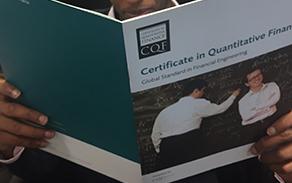Contact our team
32nd Floor,
NY, NY, 10019

The use of advanced technologies in finance is as old as the markets themselves; the desire to access relevant information about prices, sentiments, and trading flows is a natural factor in a competitive, risk-reward environment. Over the past ten years or so, interest in machine learning (ML) in its various forms has risen dramatically. While this field of computer science is not new, it is now flourishing, supported by fast networks, voluminous data sources, and an array of tools to extract, analyze, and manipulate information. In quant finance, ML plays a role in valuation, asset allocation, risk management, and compliance. As a form of technology that can improve accuracy in pricing, determine new investment strategies, shed light on various forms of risk, and save time and money in meeting regulatory requirements, machine learning is in demand in finance and banking.
So, how do ML and quant finance fit together? In a recent poll conducted by the CQF Institute, 88% of event attendees predicted that machine learning will change quant finance practices in the next five years. Quant finance has a firm foundation in the use of models, theories, and proofs, essentially moving from abstraction to action. Machine learning takes the opposite approach – focusing on empirical data and developing models that are based on the real world. If quant finance is generally seen as a top-down approach, ML offers a complementary bottom-up alternative. By challenging the concepts and theories that have moulded modern investing practices, ML’s data-driven models and strategies can leverage the best of both worlds.

Let’s take trading as an example. In the same poll conducted by the CQF Institute, event attendees predicted that trading would be the leading area for machine learning techniques over the next five years. The critical success factors for traders are access to information, accurate interpretation of that information, and speed in execution. Machine learning can handle vast data sets, global news, visual data, and more to seek out patterns that may be insightful and profitable when applied to trading. Further, it can be put to work in areas that are practically impenetrable for humans, including unstructured data, alterative data sets, and multi-factor analysis, for example. Although experienced traders bring depth and intuition to their analysis, having a collection of technical tools and ML “assistants” enables them to process more information faster, act decisively on strategies, and assess visualizations that highlight where interesting opportunities may exist.

As compelling as the case is for ML, one must remember the dictum from Ancient Greece, “Moderation in all things.” Looking back to the CQF poll results, the majority of those surveyed did believe that machine learning brings an exciting array of capabilities to quant finance practitioners, but they also maintained that traditional quant techniques will continue to play a significant role as well.
In a recent episode of the new CQF Institute podcast, QuantSpeak, Dr. Misha Fomytskyi of Vola Dynamics explained that, “One cannot just use ML like a black box with some mysterious algorithm where you just throw data at it and think it is going to give you the answer. I think the correct way to do this is with a combination of the two approaches [ML and traditional quant techniques] and a layering of these approaches. In some sense, you want to separate different layers of your workflow into sub problems and at each level you either solve it with traditional mathematical tools or with ML tools and then you go to another step that may use a different approach. For many quants this is going to be a learning process of how to use ML tools and how not to use them.”
Clearly, a plethora of asset and option pricing models have shaped the modern financial industry and despite their shortcomings and flaws, a tremendous amount of research and practical work has grown up around them. Even the famous, yet sometimes maligned Black Scholes model is still a touchstone in quant finance, even if other heuristics are more often used in practice. In this environment, machine learning will help drive fresh insights, perhaps validating some models and approaches, while helping to reshape or discredit others. The real strength lies in a blending of these perspectives – with ample backtesting, critique, experimentation, and deeper analysis.
Given the increasing demand across the industry, those involved in quant finance now need to expand their horizons towards machine learning and the skills required to deploy it successfully. The Certificate in Quantitative Finance (CQF) program, while maintaining a strong base in traditional techniques and analysis of models and formulas, has embraced machine learning through the inclusion of new modules in the curriculum that take a detailed look at the various forms of ML and its application to quant problems. Find out how the CQF can help you master cutting-edge machine learning techniques today.
The CQF Institute is also providing members a range of talks and conferences on ML as part of their commitment to professional development and providing the latest industry trends. Find out more about the CQF Institute here.

